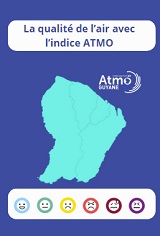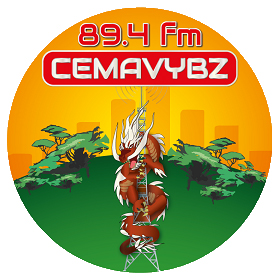Blada.com
mercredi 17 décembre
Boîtes aux lettres
Courrier des lecteurs
Petites annonces
Emploi / Formation
Covoiturage
Infos citoyennes
Infos citoyennes
08/11/21
Première pose d'un défibrillateur en Guyane
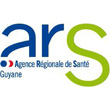 Mercredi après-midi, les équipes de l’hôpital de Cayenne et un cardiologue de Bourg-en-Bresse ont posé un défibrillateur cardiaque implantable à une patiente de 48 ans qui ne pouvait pas être évasanée. Jamais une telle opération n’avait été réalisée sur le territoire. L’autorisation d’une telle intervention, dont ne disposait pas l’établissement, a été accordée par la directrice générale de l’ARS à minuit la nuit précédente. Cinq heures après l’intervention, le cardiologue reprenait l’avion. La patiente, qui travaille… au Samu, reprend son poste ce matin.
Mercredi après-midi, les équipes de l’hôpital de Cayenne et un cardiologue de Bourg-en-Bresse ont posé un défibrillateur cardiaque implantable à une patiente de 48 ans qui ne pouvait pas être évasanée. Jamais une telle opération n’avait été réalisée sur le territoire. L’autorisation d’une telle intervention, dont ne disposait pas l’établissement, a été accordée par la directrice générale de l’ARS à minuit la nuit précédente. Cinq heures après l’intervention, le cardiologue reprenait l’avion. La patiente, qui travaille… au Samu, reprend son poste ce matin.
C’est une course contre la montre qui s’est jouée en une semaine entre l’hôpital de Cayenne et l’Agence Régionale de Santé, pour prendre en charge une patiente, Aude Nabo. Elle s’est conclue mercredi après-midi par la pose d’un défibrillateur cardiaque implantable, une opération jamais réalisée jusque-là en Guyane. Aujourd’hui, la patiente va bien. Samedi, elle faisait son ménage, sourit-elle. Et ce matin, elle retournera au travail sans cette épée de Damoclès qu’est le risque de mort subite en raison d’une pathologie cardiaque.
Une collaboration ancienne entre cardiologues de Cayenne et de Bourg-en-Bresse
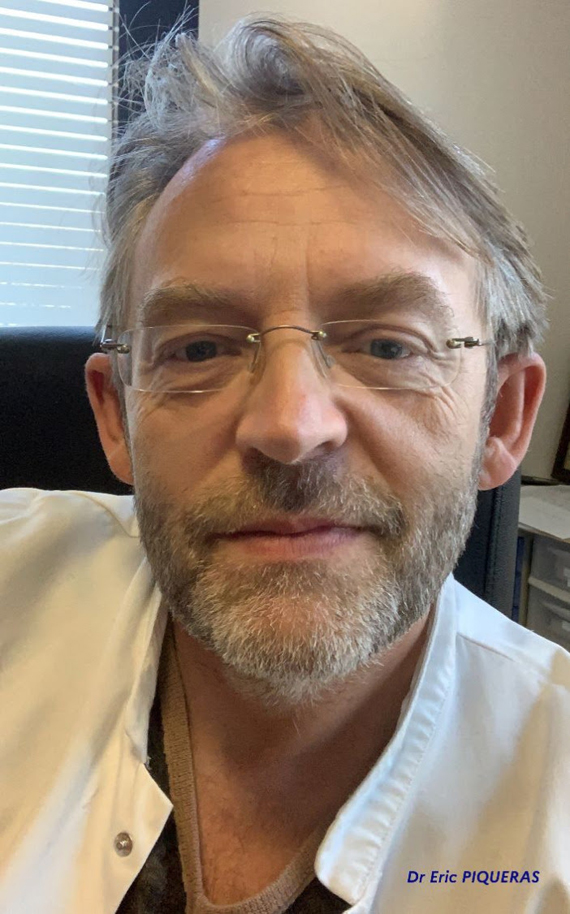 La collaboration entre l’hôpital de Cayenne et le Dr Piqueras, cardiologue à Bourg-en-Bresse (Ain), est un peu le fruit du hasard. Il y a quelques années, le médecin a été amené à former des professionnels au Congo où « il n’y avait aucune intervention en cardiologie ». De 2015 à 2019, il forme un de ses confrères sur place « qui est désormais autonome pour la pose de pacemaker ». Dans le même temps, un de ses patients de Bourg-en-Bresse lui annonce qu’il a « une opportunité professionnelle en Guyane ». Il souhaite que son cardiologue lui dise si c’est possible ou pas. Le Dr Piqueras dit oui « puisqu’on peut organiser de la télésurveillance ». Tout ne se passe pas aussi bien qu’espéré et il découvre la situation pratique du territoire. Le patient se retrouve à la consultation du Dr Cyrille Mathien, qui après avoir travaillé à l’hôpital de Cayenne s’est installé en libéral. C’est comme cela que les deux cardiologues font connaissance.
La collaboration entre l’hôpital de Cayenne et le Dr Piqueras, cardiologue à Bourg-en-Bresse (Ain), est un peu le fruit du hasard. Il y a quelques années, le médecin a été amené à former des professionnels au Congo où « il n’y avait aucune intervention en cardiologie ». De 2015 à 2019, il forme un de ses confrères sur place « qui est désormais autonome pour la pose de pacemaker ». Dans le même temps, un de ses patients de Bourg-en-Bresse lui annonce qu’il a « une opportunité professionnelle en Guyane ». Il souhaite que son cardiologue lui dise si c’est possible ou pas. Le Dr Piqueras dit oui « puisqu’on peut organiser de la télésurveillance ». Tout ne se passe pas aussi bien qu’espéré et il découvre la situation pratique du territoire. Le patient se retrouve à la consultation du Dr Cyrille Mathien, qui après avoir travaillé à l’hôpital de Cayenne s’est installé en libéral. C’est comme cela que les deux cardiologues font connaissance.
En juillet (en période de couvre-feu et de quarantaine Covid), le Dr Piqueras vient une première fois huit jours en Guyane. Il arrive avec du matériel. « Nous avons lancé la collaboration, notamment des programmateurs pour la surveillance des patients ». Des téléconsultations sont organisées. Un premier holter implantable est mis en place (anesthésie locale) à l’hôpital Saint Gabriel. Une première rencontre a lieu avec des responsables de la caisse générale de sécurité sociale (CGSS). « J’ai commencé à rédiger un projet qui permettrait à la Guyane d’être autonome sur plusieurs interventions à Cayenne, à Kourou, au Chog (Saint-Laurent du Maroni) et à (l’hôpital privé) Saint-Gabriel. » Un pas de plus sur le chemin du CHU et de la relocalisation d’activités essentielles sur le territoire (avec un coût moindre).
Une patiente rencontrée à l’occasion d’une mission d’appui pour structurer la filière cardio en Guyane
Le Dr Éric Piqueras est donc en contact avec le Centre Hospitalier de Cayenne depuis le mois de juillet, pour l’aider à structurer une filière dans cette spécialité. Après une première visite il y a trois mois, il revient en Guyane il y a quinze jours. Le 26 octobre, il reçoit en consultation la patiente de 48 ans. Elle est « porteuse d’une myocardiopathie dilatée hypokinétique sévère. Les capacités de contraction de son cœur sont fortement affaiblies. Le risque de mort subite est élevé », explique le médecin.
Cette patiente ne peut pas être évasanée. Elle reçoit un traitement à base de bétabloquants pour éviter les troubles du rythme cardiaque et « lui permettre de vivre normalement », souligne-t-il. Les hôpitaux de Guyane n’ont ni les autorisations, ni le matériel, ni les compétences pour une telle opération. Dans le plan de développement de l’hôpital de Cayenne, l’autorisation était discutée pour février, lors d’une prochaine visite du cardiologue. « Si on n’a pas de chance, elle peut mourir la semaine avant mon retour », résume-t-il. Tout l’enjeu est donc de réunir les conditions d’une intervention avant le mercredi 3 novembre, jour du vol retour du Dr Piqueras.
La présentation du projet de filière… et du cas urgent de la patiente
Outre des consultations spécialisées en rythmologie interventionnelle pour les patients du Dr Mathien avec qui il s’est lié d’amitié, cette visite en Guyane a pour but de « poursuivre la mise en place de la filière », explique-t-il, pas vraiment de réaliser une première médicale. Tour à tour, des réunions ont lieu avec la direction de l’hôpital de Cayenne (CHC), avec la Caisse générale de sécurité sociale puis le jeudi 28 avec la direction de l’offre de soins, à l’Agence Régionale de Santé (ARS), « pour expliquer les projets possibles ». Au milieu des échanges, le cardiologue glisse le problème de cette patiente et la perspective d’une intervention avant son départ.
Une mobilisation collective, pour rendre l’opération possible
L’ARS s’active pour étudier la sécurité juridique d’une telle opération, qu’aucun établissement de Guyane n’a encore réalisée. Le matériel nécessaire à l’opération, qui n’est pas disponible en Guyane, est livré dès le mardi matin par DHL. Les Pr Félix Djossou (président de la commission médicale d’établissement du CHC), Hatem Kallel (chef du pôle urgences – soins critiques), Jocelyn Inamo (chef de la cardiologie au CHU de Martinique) et le Dr Hakim Amroun (chef du bloc opératoire) donnent un avis favorable à cette première. Christophe Robert, le directeur général de l’hôpital, sollicité avec la directrice des affaires médicales, aussi.
De son côté, l’ARS doit s’assurer que toutes les conditions sont réunies. « Les risques pour cette intervention sont assez modestes mais existent quand même, reconnaît le cardiologue. Quand la technique n’est pas maîtrisée ou si le patient est très à risque, il peut y avoir des complications. » Pour le Dr Mathien, il est important que l’ARS joue son rôle et fasse part de son accord : « L’ARS contrôle pour que jamais on ne puisse nous reprocher d’avoir travaillé sans autorisation. »
Or à Cayenne, jamais personne n’a réalisé un tel geste. Le rapport d’inspection sur la création du CHU de Guyane notait d’ailleurs que « le CHC, autorisé pour la cardiologie interventionnelle, est équipé d’un plateau technique spécialisé pour les actes de coronaro angioplastie et de rythmologie interventionnelle, permettant la réalisation de ces actes, mais les ressources humaines ne sont pas présentes à ce jour ou n’étaient pas disponibles jusqu’à récemment ». La cible RH « est inférieure aux recommandations de la Société française de cardiologie », note le même rapport.
L’hypothèse d’un report en décembre
Mardi matin, l’agence confirme avoir accordé en 2019 une autorisation de 2019 à l’hôpital de Cayenne « relative à la cardiologie interventionnelle et aux actes électro-physiologiques de rythmologie » mais suspend sa décision à la présentation de garanties supplémentaires permettant d’assurer la sécurité de cette opération inédite en Guyane, à savoir « l’implantation sous-cutanée d'un défibrillateur cardiaque automatique sans fonction de défibrillation atriale, avec pose d'une sonde intra-atriale et d’une sonde intraventriculaire droites par voie veineuse transcutanée ». Le mardi à 20 heures, le Dr Piqueras informe la patiente que l’opération ne pourra pas avoir lieu « pour ne pas la laisser dans l’incertitude encore vingt-quatre heures, en lui causant une grande déception ». L’hypothèse d’une intervention en décembre lui est évoquée.
Un feu vert donné en pleine nuit
Le Dr Piqueras envoie de nouveaux éléments à l’ARS dans la soirée, précisant que le créneau pour intervenir est très étroit : le bloc chirurgical de l’hôpital est très pris ce mercredi, notamment par des césariennes urgentes. Le cardiologue conclut son courrier électronique en signalant qu’il sera à l’hôpital « s’il le faut, très tôt ou entre midi et deux heures pour prendre en charge la patiente si tous les feux sont au vert. Vu la fenêtre de tir extrêmement courte qu’il nous reste, je laisse mon portable ouvert 24h sur 24h pour connaître votre décision finale et m’organiser en fonction ». A minuit, Clara de Bort, directrice générale de l’ARS, autorise l’intervention. Il faut faire vite : l’avion du médecin décolle le mercredi soir à 21h45.
Le bloc est prêt !
A 1 heure du matin, il laisse un message à la patiente lui annonçant la nouvelle et lui disant de ne rien manger le matin. La jeune femme travaille à l’hôpital. Elle part sans l’avoir lu. A son arrivée au travail, elle explique qu’elle a pris un petit déjeuner léger à 6 heures. Si l’opération a lieu dans l’après-midi, ça peut passer. Le Dr Piqueras transmet une liste du matériel à réunir aux équipes du CHC. La pharmacie de l’hôpital le réunit. Au bloc, un emplacement et du personnel est trouvé. Le bloc est prêt ! La patiente arrive sur la table d’opération à 15 heures. « Il y avait quelques réglages à faire, on n’avait pas l’habitude témoigne le praticien rhônalpin. Mais j’ai travaillé avec une super équipe de bloc, des personnes très compétentes. Thierry, l’Ibode (infirmier de bloc opératoire) a été parfait, tout comme l’équipe d’anesthésie. » Deux heures plus tard– à peine plus que dans un établissement rompu à ce geste – le défibrillateur est posé. Il a même le temps de communiquer, de vive voix, la bonne nouvelle aux différentes personnes impliquées dans l’organisation. La patiente passe la nuit suivante en chirurgie « pour s’assurer que tout se passe bien » puis rentre chez elle. Ce matin, elle retourne à l’hôpital… pour le travail.
Aude Nabo : « Je suis fière d’être la première en Guyane ! »
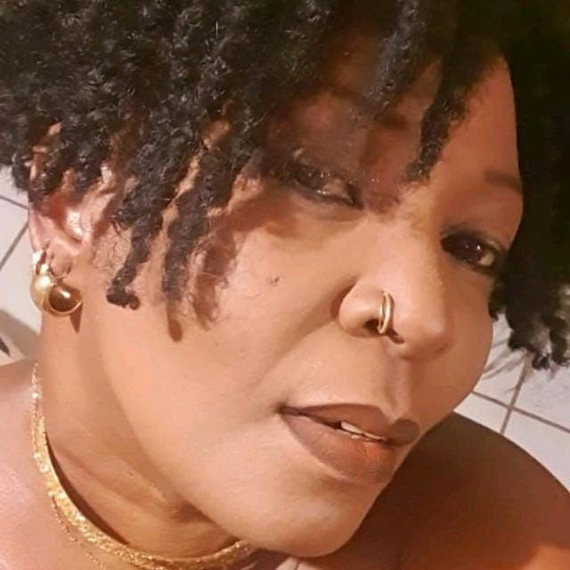 Aude Farlot, épouse Nabo, n’en finit plus de compter ses anges gardiens. Le défibrillateur qu’elle a dans le cœur d’abord. C’est ainsi que le Dr Éric Piqueras le lui a présenté : un appareil qui surveille en permanence son cœur et qui n’interviendra que si nécessaire. Le cardiologue de Bourg-en-Bresse est un autre de ses anges gardiens. Elle cite encore le Dr Cyrille Mathien chez qui elle a consulté mi-septembre. Le Pr Jean Pujo, son chef des urgences-Samu, « qui a toujours suivi mes examens ». « Je travaille à l’hôpital et je ne peux que dire merci également au Dr Amroun, au Pr Kallel. Ils se sont battus pour que cela se fasse. Je ne peux que dire merci à mon directeur qui aurait pu dire non. La pharmacie de l’hôpital a tout fait pour avoir le matériel. Le Dr Khémiss, en anesthésie. Et puis Virginie Castriano, une infirmière du Samu. Quand j’ai fait mon malaise à la maison, c’est elle qui m’a orientée vers le Dr Mathien. Aujourd’hui, d’être là, waouh ! »
Aude Farlot, épouse Nabo, n’en finit plus de compter ses anges gardiens. Le défibrillateur qu’elle a dans le cœur d’abord. C’est ainsi que le Dr Éric Piqueras le lui a présenté : un appareil qui surveille en permanence son cœur et qui n’interviendra que si nécessaire. Le cardiologue de Bourg-en-Bresse est un autre de ses anges gardiens. Elle cite encore le Dr Cyrille Mathien chez qui elle a consulté mi-septembre. Le Pr Jean Pujo, son chef des urgences-Samu, « qui a toujours suivi mes examens ». « Je travaille à l’hôpital et je ne peux que dire merci également au Dr Amroun, au Pr Kallel. Ils se sont battus pour que cela se fasse. Je ne peux que dire merci à mon directeur qui aurait pu dire non. La pharmacie de l’hôpital a tout fait pour avoir le matériel. Le Dr Khémiss, en anesthésie. Et puis Virginie Castriano, une infirmière du Samu. Quand j’ai fait mon malaise à la maison, c’est elle qui m’a orientée vers le Dr Mathien. Aujourd’hui, d’être là, waouh ! »
Patiente et collègue à la fois
Cela fait trente minutes, ce dimanche, qu’Aude Nabo nous raconte son histoire. De citer tous ceux qui se sont investis pour son opération lui fait monter les larmes aux yeux. « Vous savez ce que sont les fanm djok ! On se bat. On ne pleure pas facilement. Mon cœur pouvait lâcher à tout moment. Et là, j’ai mon cœur qui bat. J’ai des collègues qui sont au top, des professeurs, des médecins qui savent travailler. En rentrant au bloc opératoire, j’étais accueillie par les collègues avec qui je travaille depuis des années. De les voir, que ce soit des personnes avec qui je travaille des fois depuis trente ans qui me reçoivent pour la première pose d’un défibrillateur en Guyane… C’est encore plus magnifique ensuite de voir l’infirmière qui reste après sa garde, qui me tient la main. Je suis fière d’être la première. J’espère ne pas être la dernière. Il faut qu’on arrête de critiquer. Oui, l’hôpital n’est pas top, mais ça s’arrange. Et il y a des personnes qui connaissent leur travail, qui y mettent tout leur cœur. Il faut qu’on arrête de dire que c’est mieux à l’extérieur. »
Un courage remarquable
Pour le Dr Mathien, la personnalité d’Aude Nabo a joué dans la réussite de cette première. « Elle est d’un courage remarquable. Elle a accepté l’ascenseur émotionnel « On fait – On fait pas – On fait – On fait pas – On fait ». Elle s’est battue pour que cela se fasse en Guyane. Elle n’est pas seulement la patiente, elle est une actrice de cette histoire. Sans elle, on n’y serait pas arrivé non plus. »
Aude Nabo ne pouvait pas être évasanée. Elle connaît ses problèmes cardiaques depuis des années. Son père en est décédé. « Depuis, j’ai toujours fait mes petits contrôles, après chaque date anniversaire. » Elle se souvient de ses premières consultations avec le Dr Coumba, qui était à l’époque chef de la cardiologie de l’hôpital.
Les années passent. « Je me suis mariée, j’ai eu mes trois enfants. » En juin, elle se plaint de maux de gorge. Elle s’en souvient très bien. « Je travaillais, c’était le deuxième tour des élections à la CTG. » Elle pense à une rhinopharyngite ou à une angine. Le lendemain soir, après une nouvelle journée de travail, elle a du mal à respirer. Aux urgences, on lui décèle un abcès dans la gorge. « L’ORL m’annonce qu’il faudra me retirer les amygdales. » L’intervention est prévue mi-septembre. Lors des examens précédents, le médecin lui annonce que son cœur est à 15 battements par minute. « Je ne ressentais pourtant rien. » Elle est hospitalisée une semaine. « Je ne comprenais pas pourquoi. J’allais bien. » Des examens révèlent pourtant que son cœur ne fonctionne qu’à 25 %. A sa sortie de l’hôpital, elle consulte le Dr Mathien. Le projet avec le Dr Piqueras est mis en place. La suite, ce sera cette première en Guyane.
« Je me suis demandée si je devais faire l’opération, parce que le 8 décembre, ce sont mes 20 ans de mariage. Ce sera aussi bientôt l’anniversaire de ma plus jeune fille. Mais je suis une battante. J’étais prête à tout, pas seulement pour moi. Aussi pour mes trois enfants et mon mari qui m’adorent. Pour l’hôpital. Pour la Guyane. Je suis fière qu’on avance. »
Cet article est issu de la Lettre pro de l’Agence régionale de santé. Vous pouvez vous y abonner en remplissant le formulaire suivant : https://forms.sbc28.com/5a8bed50b85b5350ef1cd117/t13M7zUZQi2XMq5E3DdnhQ/0WQoeDwjRXqJblCpKbLDzA/form.html
On Wednesday afternoon, teams from Cayenne hospital and a Bourg-en-Bresse cardiologist fitted an implantable cardiac defibrillator to a 48-year-old patient who could not be evacuated. Such an operation had never been carried out in the territory. Authorization for such an intervention, which the establishment did not have, was granted by the director general of the ARS at midnight the night before. Five hours after the operation, the cardiologist was back on the plane. The patient, who works… at Samu, returns to her post this morning.
It was a race against time that was played out in a week between the Cayenne hospital and the Regional Health Agency, to take care of a patient, Aude Nabo. It concluded on Wednesday afternoon with the installation of an implantable cardiac defibrillator, an operation never performed before in French Guiana. Today the patient is doing well. She was doing her housework on Saturday, she smiles. And this morning, she will return to work without that sword of Damocles that is the risk of sudden death from heart disease.
A long-standing collaboration between cardiologists from Cayenne and Bourg-en-Bresse
 The collaboration between Cayenne hospital and Dr Piqueras, cardiologist in Bourg-en-Bresse (Ain), is a bit of a coincidence. A few years ago, the doctor had to train professionals in Congo where "there was no intervention in cardiology". From 2015 to 2019, he trained one of his colleagues on site "who is now independent for the placement of a pacemaker". At the same time, one of his patients from Bourg-en-Bresse tells him that he has "a professional opportunity in French Guiana". He wants his cardiologist to tell him whether it's possible or not. Dr Piqueras said yes "since we can organize telesurveillance". Everything does not go as well as hoped and he discovers the practical situation of the territory. The patient finds himself in the consultation of Dr. Cyrille Mathien, who after working at Cayenne hospital has settled in private. This is how the two cardiologists got to know each other.
The collaboration between Cayenne hospital and Dr Piqueras, cardiologist in Bourg-en-Bresse (Ain), is a bit of a coincidence. A few years ago, the doctor had to train professionals in Congo where "there was no intervention in cardiology". From 2015 to 2019, he trained one of his colleagues on site "who is now independent for the placement of a pacemaker". At the same time, one of his patients from Bourg-en-Bresse tells him that he has "a professional opportunity in French Guiana". He wants his cardiologist to tell him whether it's possible or not. Dr Piqueras said yes "since we can organize telesurveillance". Everything does not go as well as hoped and he discovers the practical situation of the territory. The patient finds himself in the consultation of Dr. Cyrille Mathien, who after working at Cayenne hospital has settled in private. This is how the two cardiologists got to know each other.
In July (during a Covid curfew and quarantine period), Dr Piqueras comes for the first time for eight days in French Guiana. He arrives with material. "We launched the collaboration, including programmers for patient monitoring." Teleconsultations are organized. A first implantable holter is placed (local anesthesia) at Saint Gabriel Hospital. A first meeting takes place with officials of the general social security fund (CGSS). "I started to write a project that would allow French Guiana to be autonomous on several interventions in Cayenne, Kourou, Chog (Saint-Laurent du Maroni) and (private hospital) Saint-Gabriel. "One more step on the way to the CHU and the relocation of essential activities in the territory (at a lower cost).
A patient met during a support mission to structure the cardio sector in French Guiana
Dr Éric Piqueras has therefore been in contact with the Cayenne Hospital Center since July, to help him structure a sector in this specialty. After a first visit three months ago, he returned to French Guiana two weeks ago. On October 26, he saw the 48-year-old patient for consultation. She is "a carrier of severe hypokinetic dilated cardiomyopathy. The contraction capacity of his heart is severely weakened. The risk of sudden death is high, ”explains the doctor.
This patient cannot be evased. She receives treatment with beta-blockers to avoid heart rhythm disturbances and "allow her to live normally", he emphasizes. Hospitals in French Guiana have neither the authorizations, nor the equipment, nor the skills for such an operation. In the Cayenne hospital development plan, authorization was discussed for February, when the cardiologist will visit again. "If we're unlucky, she can die the week before I come back," he said. The challenge is therefore to meet the conditions for an intervention before Wednesday, November 3, the day of Dr. Piqueras's return flight.
Presentation of the sector project ... and the patient's urgent case
In addition to specialized consultations in interventional rhythmology for the patients of Dr Mathien with whom he befriended, this visit to French Guiana aims to "continue the establishment of the sector", he explains, not really to achieve a medical first. In turn, meetings take place with the management of the Cayenne hospital (CHC), with the General Social Security Fund and then on Thursday 28 with the direction of the care offer, at the Regional Health Agency ( ARS), “to explain possible projects”. In the midst of the discussions, the cardiologist slips over this patient's problem and the prospect of an intervention before her departure.
Collective mobilization, to make the operation possible
The ARS is active in studying the legal certainty of such an operation, which no establishment in French Guiana has yet carried out. The equipment needed for the operation, which is not available in French Guiana, is delivered on Tuesday morning by DHL. Professors Félix Djossou (president of the medical establishment commission of the CHC), Hatem Kallel (head of the emergency department - critical care), Jocelyn Inamo (head of cardiology at the Martinique CHU) and Dr Hakim Amroun (head of the unit operative) give a favorable opinion to this first. Christophe Robert, the general manager of the hospital, approached along with the director of medical affairs, too.
For its part, the LRA must ensure that all the conditions are met. “The risks for this intervention are quite modest but still exist, recognizes the cardiologist. When the technique is not mastered or the patient is at high risk, there can be complications. "For Dr Mathien, it is important that the ARS plays its role and expresses its agreement:" The ARS controls so that we can never be criticized for having worked without authorization. "
But in Cayenne, no one has ever made such a gesture. The inspection report on the creation of the University Hospital of French Guiana also noted that "the CHC, authorized for interventional cardiology, is equipped with a specialized technical platform for acts of coronary angioplasty and interventional rhythmology, allowing the realization of these acts, but human resources are not present to date or were not available until recently ”. The HR target "is lower than the recommendations of the French Society of Cardiology," notes the same report.
The hypothesis of a postponement in December
Tuesday morning, the agency confirms having granted in 2019 an authorization of 2019 to the Cayenne hospital "relating to interventional cardiology and electro-physiological acts of rhythmology" but suspends its decision on the presentation of additional guarantees to ensure the safety of this unprecedented operation in French Guiana, namely "the subcutaneous implantation of an automatic cardiac defibrillator without atrial defibrillation function, with placement of an intra-atrial probe and a straight intraventricular probe via the venous route transcutaneous ”. On Tuesday at 8 p.m., Dr Piqueras informed the patient that the operation could not take place "so as not to leave her in doubt for another twenty-four hours, causing her great disappointment". The hypothesis of an intervention in December is mentioned to him.
A green light given in the middle of the night
Dr Piqueras sends new information to the ARS in the evening, specifying that the window for intervention is very narrow: the surgical unit of the hospital is very busy this Wednesday, especially with urgent cesarean sections. The cardiologist concludes his email by noting that he will be in the hospital "if necessary, very early or between noon and 2 a.m. to take care of the patient if all the lights are green." Considering the extremely short window of fire that we have left, I leave my laptop open 24 hours a day to know your final decision and to organize myself accordingly. " At midnight, Clara de Bort, director general of the ARS, authorized the intervention. We have to act quickly: the doctor’s plane takes off on Wednesday evening at 9.45pm.
The block is ready!
At 1 am, he leaves a message for the patient telling her the news and telling her not to eat anything in the morning. The young woman works in the hospital. She leaves without having read it. When she arrived at work, she explains that she had a light breakfast at 6 am. If the operation takes place in the afternoon, it may be okay. Dr Piqueras sends a list of the material to be gathered to the CHC teams. The hospital pharmacy brings him together. In the OR, a location and staff are found. The block is ready! The patient arrives on the operating table at 3:00 p.m. "There were a few adjustments to be made, we were not used to it, testifies the practitioner from Rhône-Alpes. But I worked with a great bouldering team, very capable people. Thierry, Ibode (operating room nurse) was perfect, as was the anesthesia team. Two hours later - hardly more than in an establishment broken with this gesture - the defibrillator is installed. He even has time to communicate the good news verbally to the various people involved in the organization. The patient spends the next night in surgery "to make sure everything is going well" and then goes home. This morning, she returns to the hospital… for work.
Aude Nabo: "I am proud to be the first in French Guiana! "
 Aude Farlot, wife of Nabo, never stops counting her guardian angels. The defibrillator in her heart first. This is how Dr. Éric Piqueras presented it to him: a device that constantly monitors his heart and which will intervene only if necessary. The Bourg-en-Bresse cardiologist is another of his guardian angels. She also quotes Dr Cyrille Mathien with whom she consulted in mid-September. Professor Jean Pujo, his head of emergencies-Samu, "who has always followed my exams". “I work in the hospital and I can only say thank you to Dr Amroun, Professor Kallel as well. They fought to make it happen. I can only say thank you to my manager who could have said no. The hospital pharmacy did everything to get the supplies. Dr. Khémiss, in anesthesia. And then Virginie Castriano, a nurse from Samu. When I became uncomfortable at home, it was she who referred me to Dr. Mathien. Today to be there, wow! "
Aude Farlot, wife of Nabo, never stops counting her guardian angels. The defibrillator in her heart first. This is how Dr. Éric Piqueras presented it to him: a device that constantly monitors his heart and which will intervene only if necessary. The Bourg-en-Bresse cardiologist is another of his guardian angels. She also quotes Dr Cyrille Mathien with whom she consulted in mid-September. Professor Jean Pujo, his head of emergencies-Samu, "who has always followed my exams". “I work in the hospital and I can only say thank you to Dr Amroun, Professor Kallel as well. They fought to make it happen. I can only say thank you to my manager who could have said no. The hospital pharmacy did everything to get the supplies. Dr. Khémiss, in anesthesia. And then Virginie Castriano, a nurse from Samu. When I became uncomfortable at home, it was she who referred me to Dr. Mathien. Today to be there, wow! "
Patient and colleague at the same time
Aude Nabo has been telling us her story for thirty minutes this Sunday. To quote all those who invested in his operation brings tears to his eyes. “You know what djok fanm are! We are fighting. We don't cry easily. My heart could let go at any time. And there I have my heart beating. I have top colleagues, teachers, doctors who know how to work. Upon returning to the operating room, I was greeted by colleagues with whom I have worked for years. To see them, whether it is people with whom I have sometimes worked for thirty years who receive me for the first installation of a defibrillator in French Guyana… It is even more magnificent then to see the nurse who remains after his call. , who holds my hand. I’m proud to be the first. I hope not to be the last. We have to stop criticizing. Yes, the hospital is not great, but it works out. And there are people who know their work, who put their heart into it. We have to stop saying it's better on the outside. "
Remarkable courage
For Dr Mathien, the personality of Aude Nabo played a role in the success of this premiere. “She is remarkably courageous. She took the emotional lift "We do - We don't - We do - We don't - We do". She fought for this to happen in French Guiana. She's not just the patient, she's an actor in this story. Without her, we wouldn't have done it either. "
Aude Nabo couldn't be evased. She has known about her heart problems for years. His father died from it. “Since then, I have always done my little checks, after each anniversary date. She remembers her first consultations with Dr Coumba, who was at the time chief of cardiology at the hospital.
The years go by. “I got married, I had my three children. In June, she complains of a sore throat. She remembers it very well. “I was working, it was the second round of the CTG elections. She thinks of nasopharyngitis or sore throat. The next evening, after another day of work, she has difficulty breathing. In the emergency room, he was found to have an abscess in his throat. “The ENT tells me that my tonsils will have to be removed. The intervention is scheduled for mid-September. During previous examinations, the doctor told him that his heart was at 15 beats per minute. “Yet I did not feel anything. She is hospitalized for a week. " I did not understand why. I was fine. However, tests show that his heart is only working 25%. On leaving the hospital, she sees Dr. Mathien. The project with Dr Piqueras is set up. The rest will be this first in French Guiana.
“I wondered if I should have the operation, because December 8 is my 20th wedding anniversary. It will soon be my youngest daughter's birthday too. But I am a fighter. I was ready for anything, not just for myself. Also for my three children and my loving husband. For the hospital. For French Guiana. I am proud that we are moving forward. "
This article is from the Professional Letter of the Regional Health Agency. You can subscribe to it by filling out the following form: https://forms.sbc28.com/5a8bed50b85b5350ef1cd117/t13M7zUZQi2XMq5E3DdnhQ/0WQoeDwjRXqJblCpKbLDzA/form.html
Raccourcis

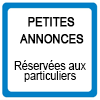
passer une petite annonce
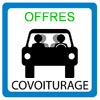
passer une annonce de covoiturage
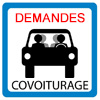
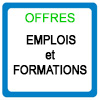
passer une annonce d’emploi
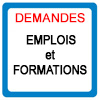
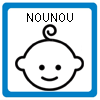
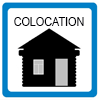
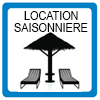
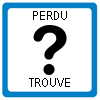
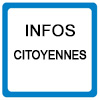
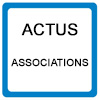
associations, postez vos actualités
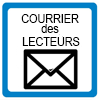
participez au courrier des lecteurs
La Guyane c’est ici
La qualité de l’Air avec
ATMO
Photothèque

Lancements 2022
Vol 259 Ariane 5



